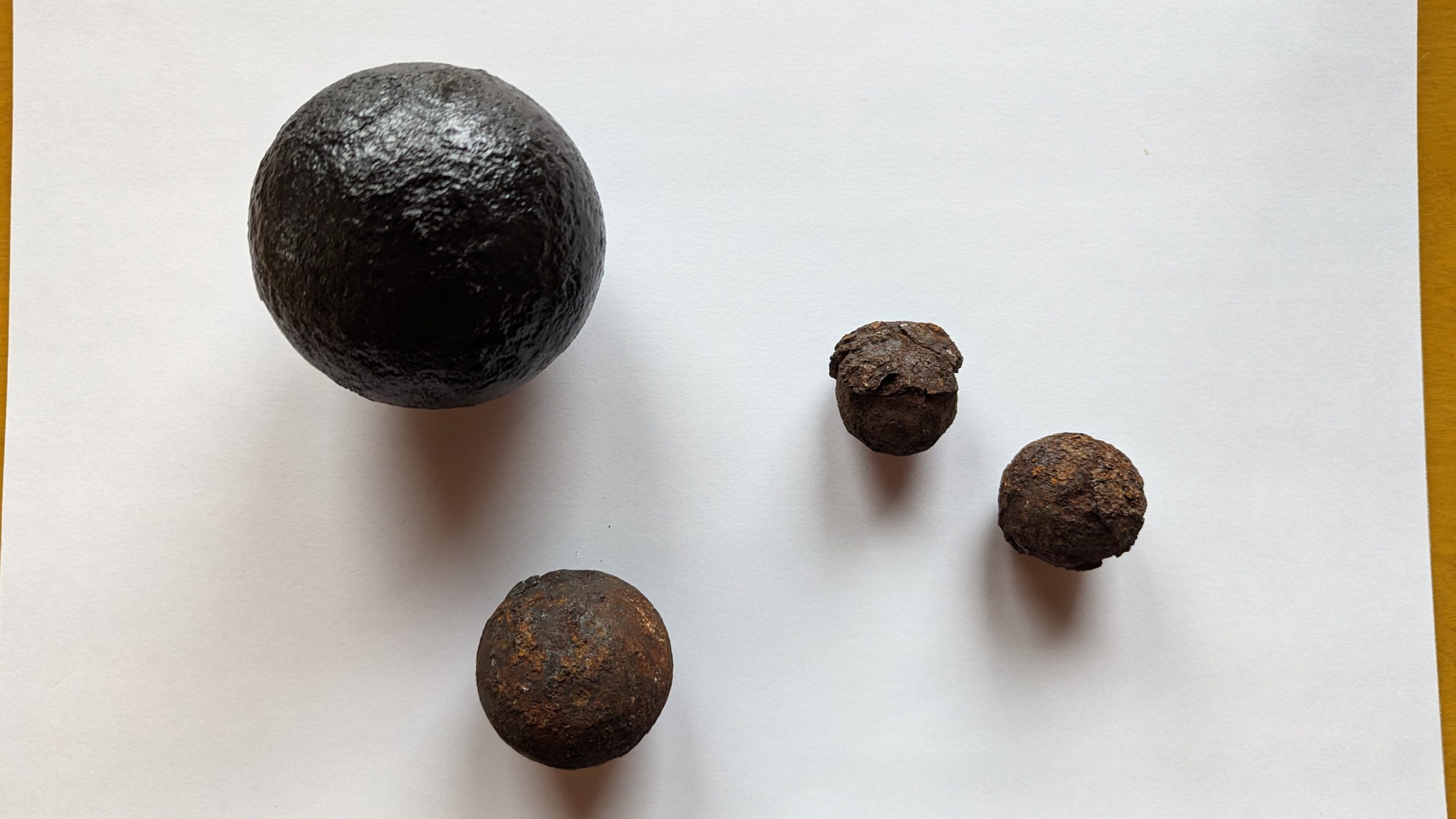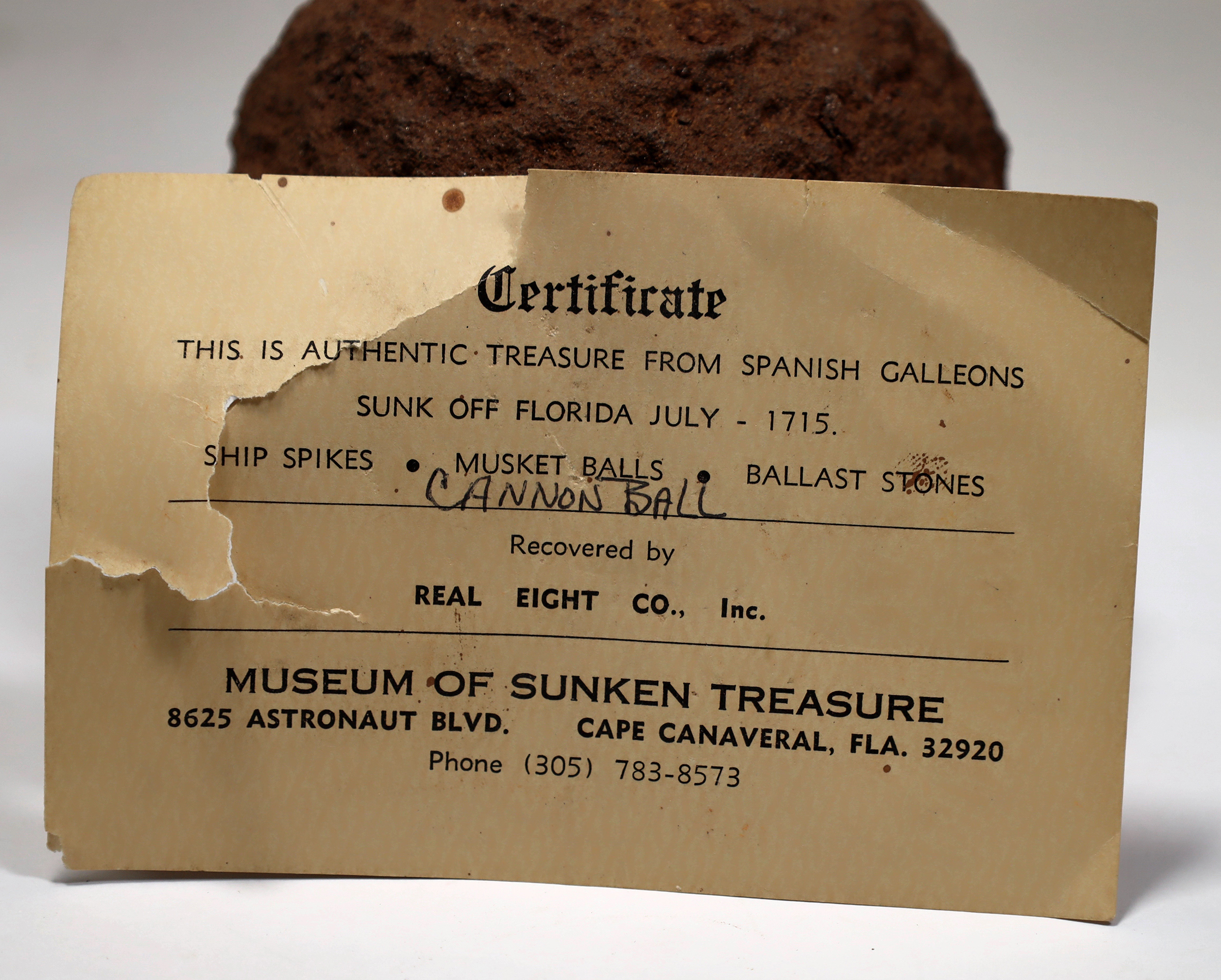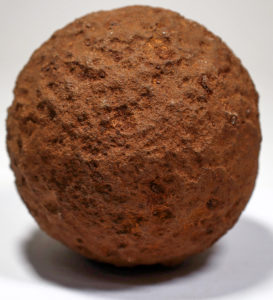Our February Treasure of the Month is a cannonball recovered from one of the wreck sites of the 1715 Fleet. Although a relatively common artifact, this cannonball is special because it can be directly attributed to the Real Eight CompanyAlso referred to occasionally as “The Real 8 Company”- was incorporated in 1961. It had eight members….Kip Wagner, Kip Kelso, Dan Thompson, Harry Cannon, Lou Ullian, Del Long, Erv Taylor and Lis... More and its Museum of Sunken Treasure. Once located in Cape Canaveral, the Museum of Sunken Treasure was formally dedicated on June 29, 1968. Previously, the Real Eight CompanyAlso referred to occasionally as “The Real 8 Company”- was incorporated in 1961. It had eight members….Kip Wagner, Kip Kelso, Dan Thompson, Harry Cannon, Lou Ullian, Del Long, Erv Taylor and Lis... More operated a small treasure museum at the First National Bank in Satellite Beach. The move to Cape Canaveral involved the building of a million-dollar structure and opened with great fanfare. Sadly, after a string of burglaries and a damaging fire, the museum closed in 1978. The original building was torn down in 2017.
According to the certificate that accompanies the cannonball, this item was recovered by the Real Eight CompanyAlso referred to occasionally as “The Real 8 Company”- was incorporated in 1961. It had eight members….Kip Wagner, Kip Kelso, Dan Thompson, Harry Cannon, Lou Ullian, Del Long, Erv Taylor and Lis... More. Although the location of specific wreck site was not listed, the certificate does establish the artifact’s pedigree with the Real Eight CompanyAlso referred to occasionally as “The Real 8 Company”- was incorporated in 1961. It had eight members….Kip Wagner, Kip Kelso, Dan Thompson, Harry Cannon, Lou Ullian, Del Long, Erv Taylor and Lis... More. The cannonball measures about 4 inches in diameter and weighs 6.4 pounds. (NOTE: Although the description of this object as provided to us lists the diameter as 4”, it is likely that this cannonball is closer to 3 ½ “ as it is clearly a ball used in a 6-pounder cannon.) It is solid iron but manifests pitting consistent with carbon and iron loss. To what degree it has been conserved cannot be determined, although from its rugged appearance conservation does not appear likely.
Cannonballs from the 1715 Fleet came in different sizes and were used for different reasons. Our featured treasure is solid and made of iron and is an example of “round shot,” a solid round projectile without an explosive charge. (Note: Hollow cannonballs known as incendiaries, packed with explosives and detonated with a fuse, were also in use. Lighter than their solid counterparts, these projectiles or “grenades” could also be thrown by hand.)
Lesser iron cannonballs, some as small as 2 inches in diameter, were used as well. Smaller still were grapeshot (a cluster of several small balls, usually iron, wrapped in a canvas bundle) and canister shot (usually lead in a wooden container that would burst open when fired from a cannon).
An example of these cannonballs can be seen in the image below:

For more information on 1715 Fleet–related artillery and armaments, see our Treasure of the Month for March 2018, October 2018, July 2020, October 2020, and November 2022.
On a final note, it is interesting to observe that the Real Eight Museum of Sunken Treasure certificate that accompanies this piece also references spikes and ballast stones as items that could be purchased at the museum. It would appear that the museum had an excellent marketing department and that they made use of many less-valuable artifacts, like spikes and ballast stones, which were plentiful but of dubious value. For instance, ballast stones were made into useful items for sale, as can be seen by accessing our Treasure of the Month for December 2021.
Special thanks to Fred Holabird of Holabird Western Americana Collections (HWA) for allowing us to use his cannonball images for our current Treasure of the Month. This cannonball was featured as lot 4001 in Holabird’s Rush to the Rockies Auction in August 2022.

